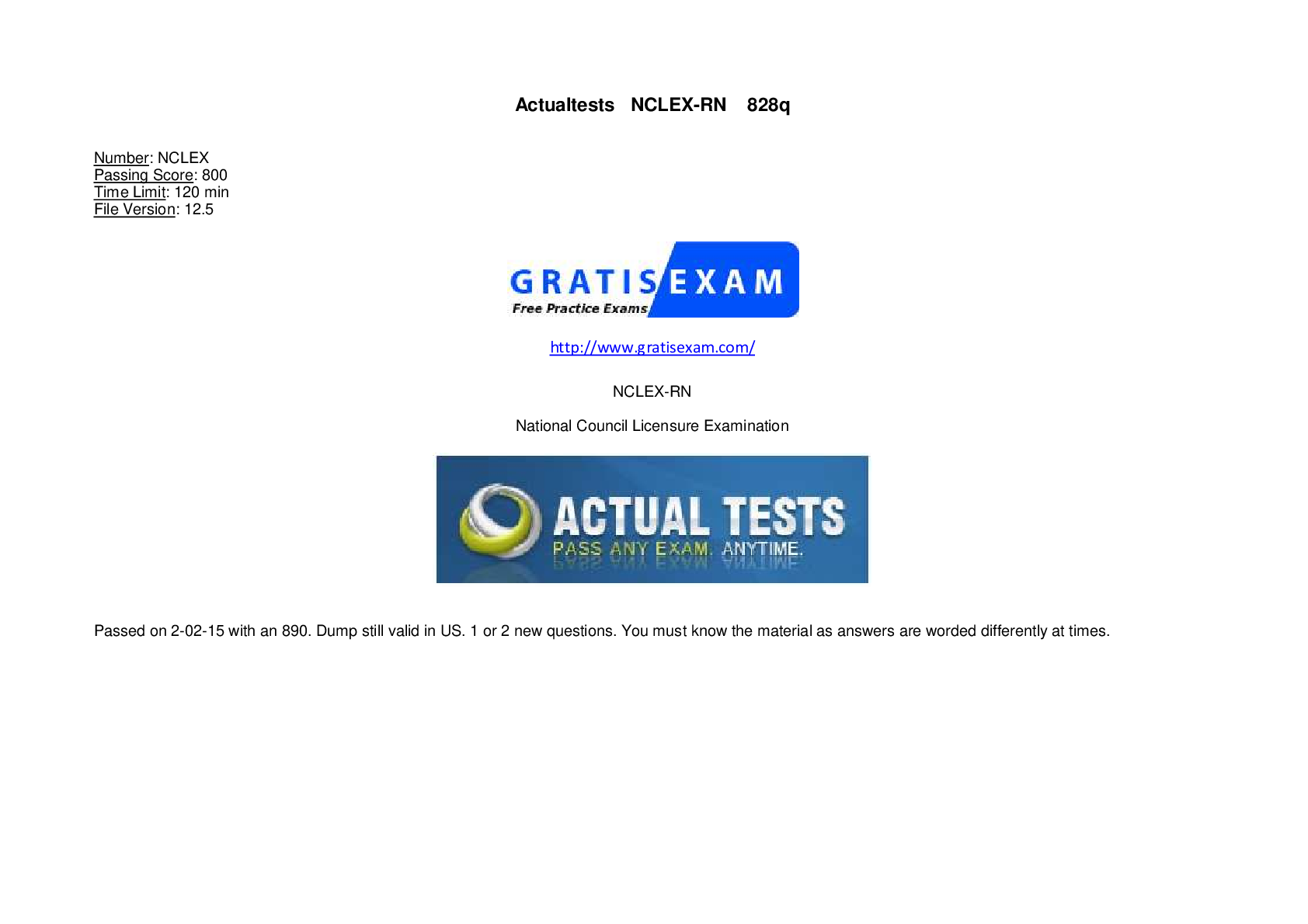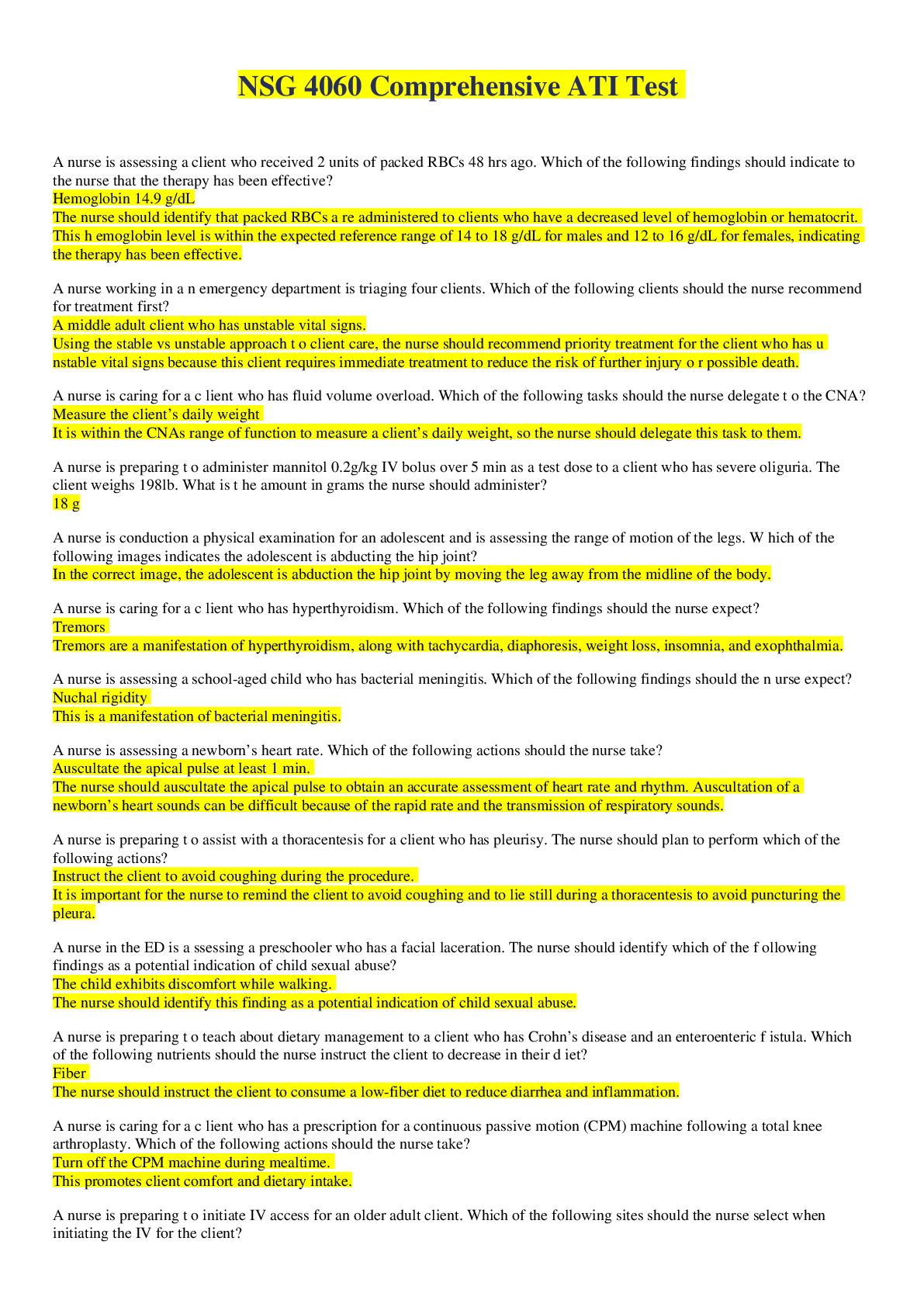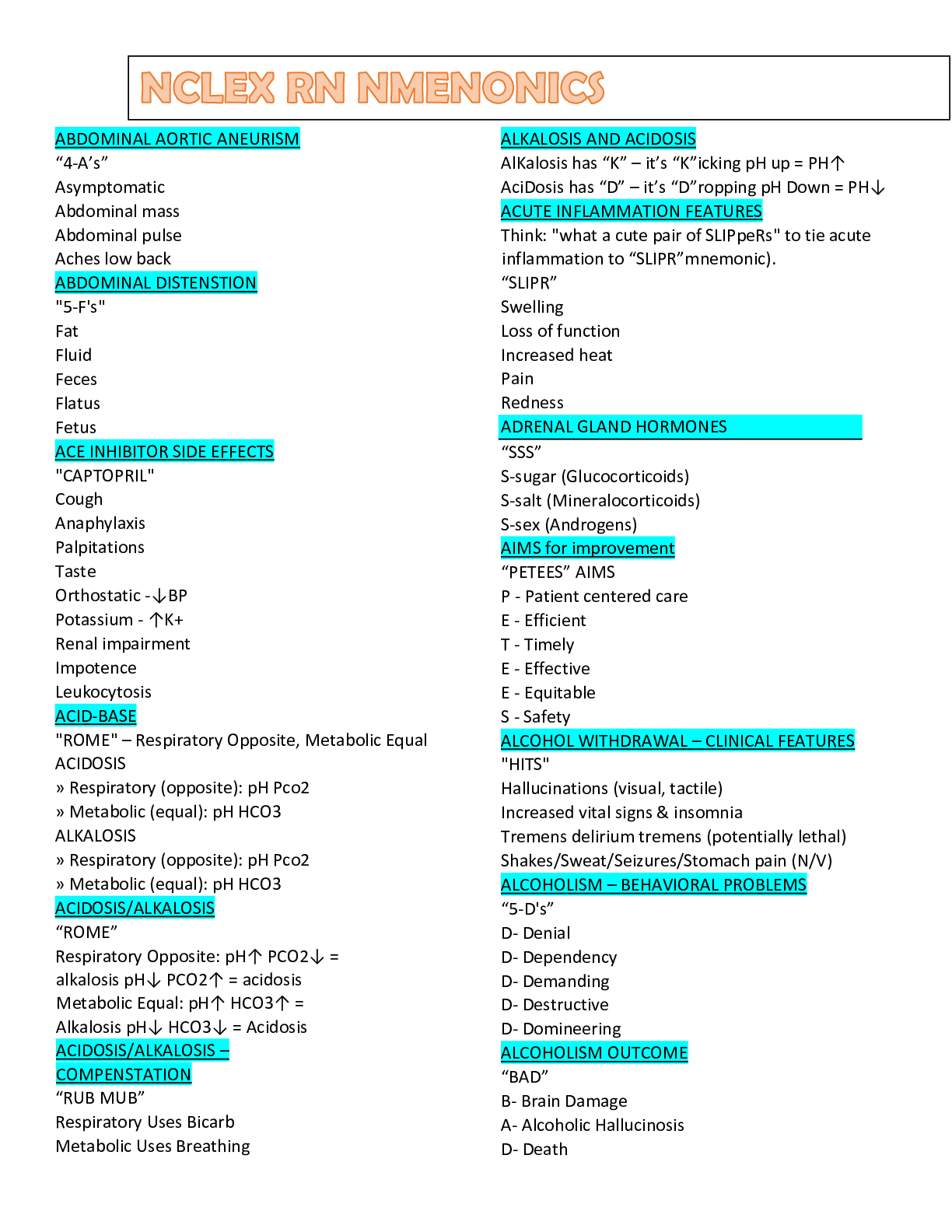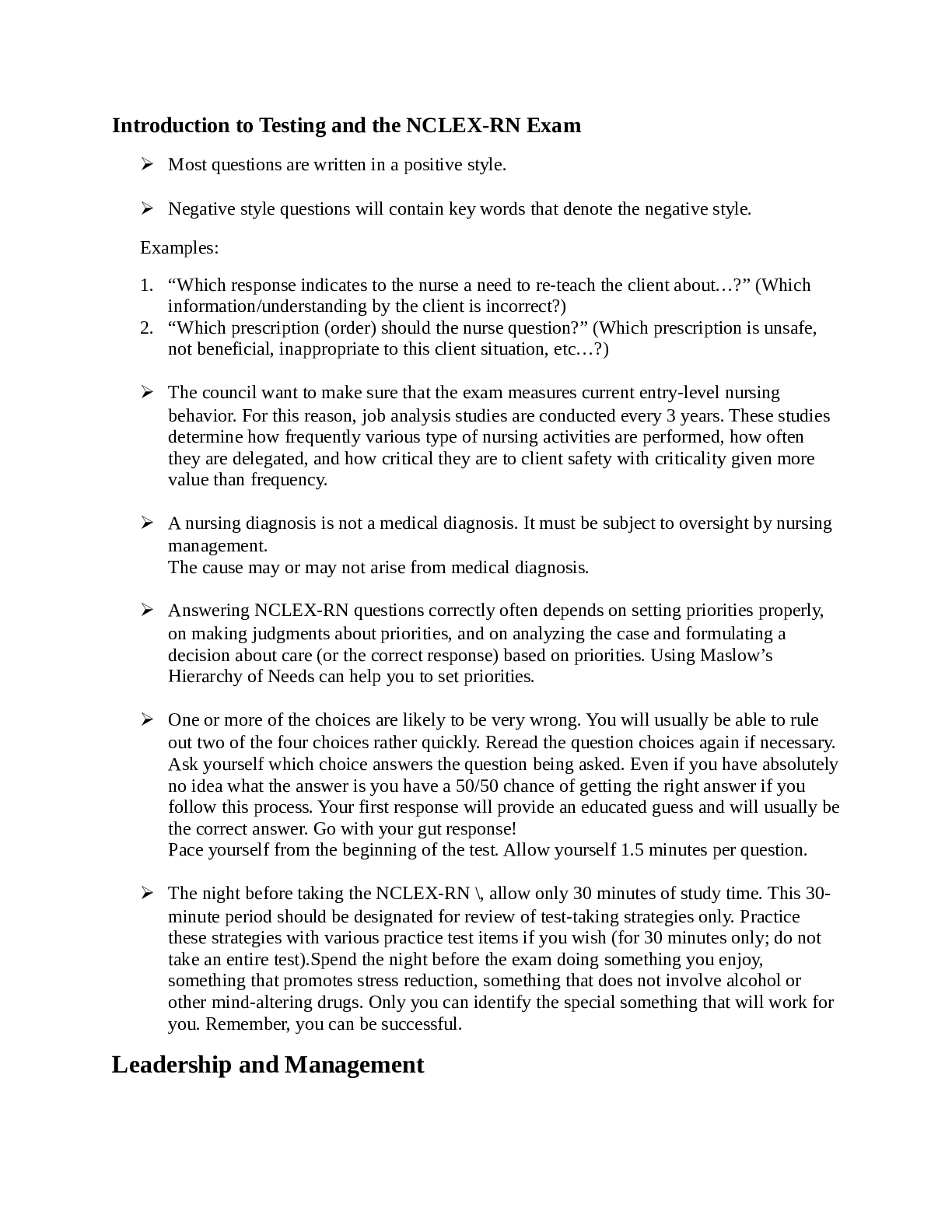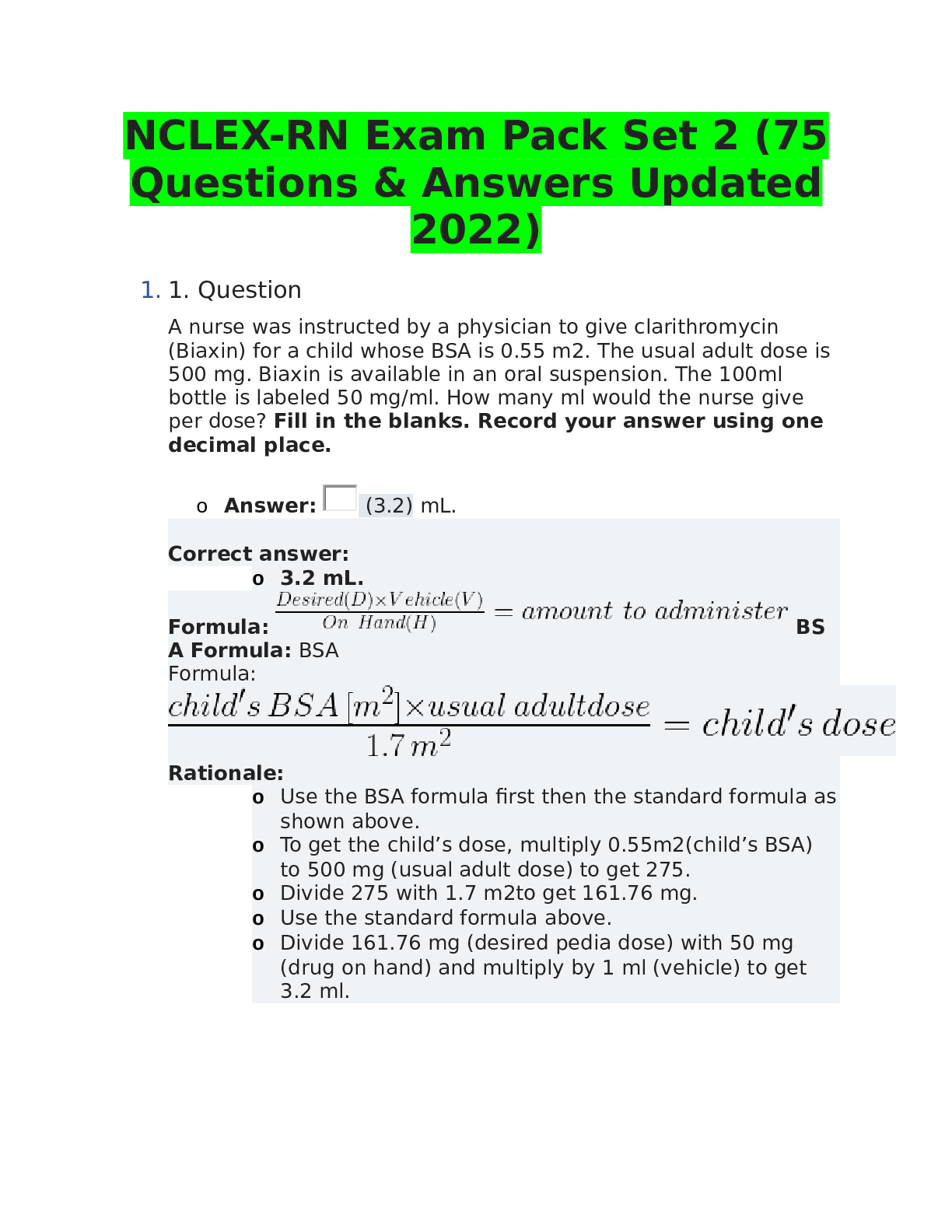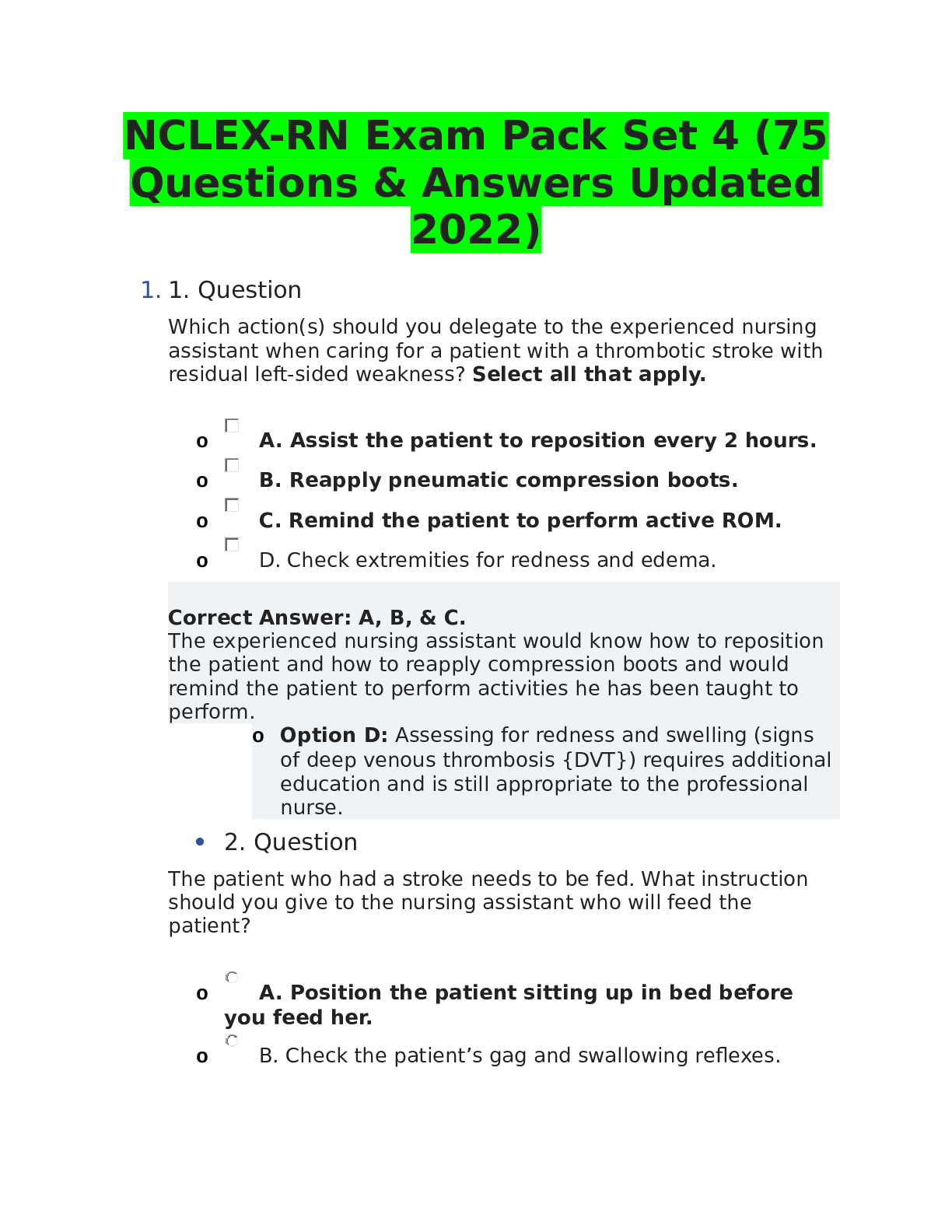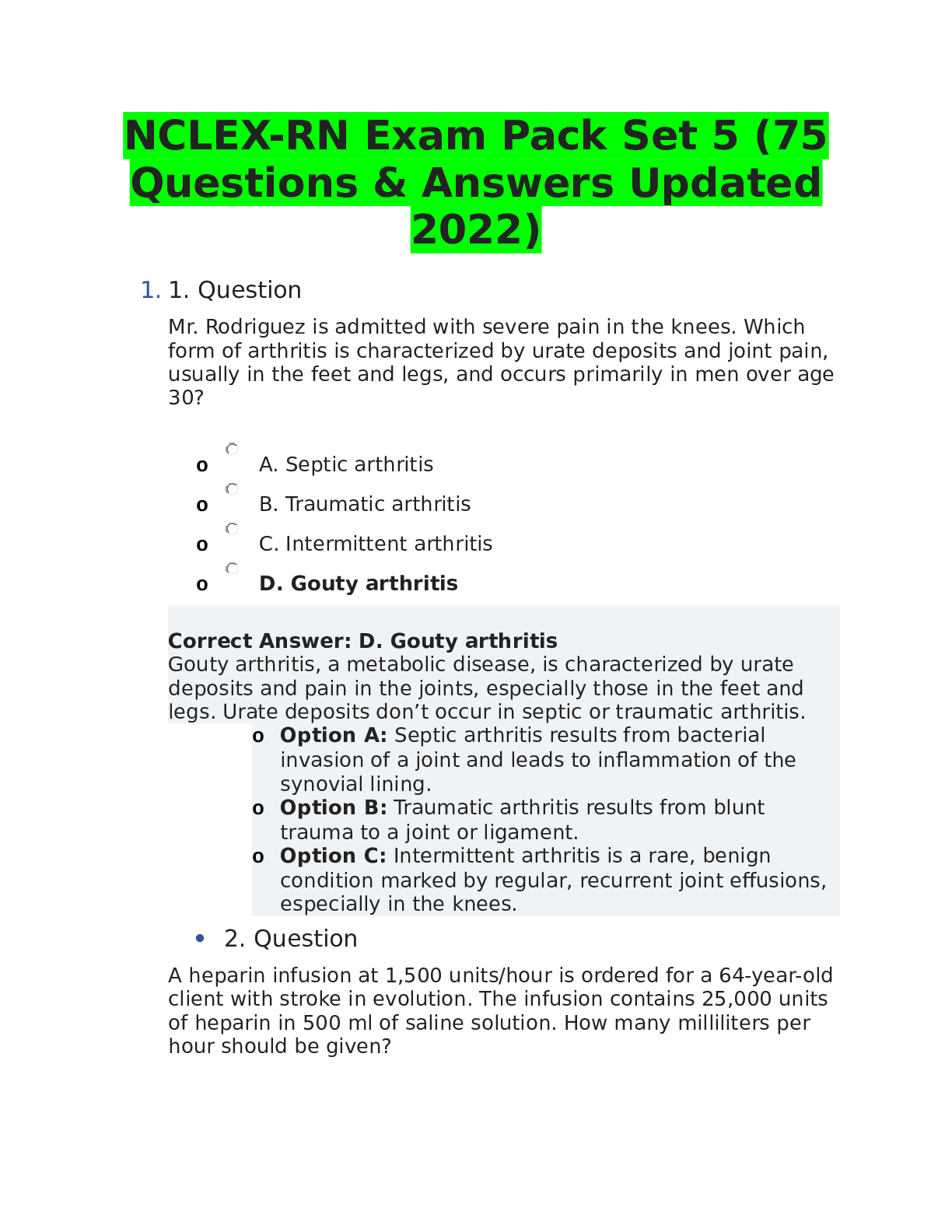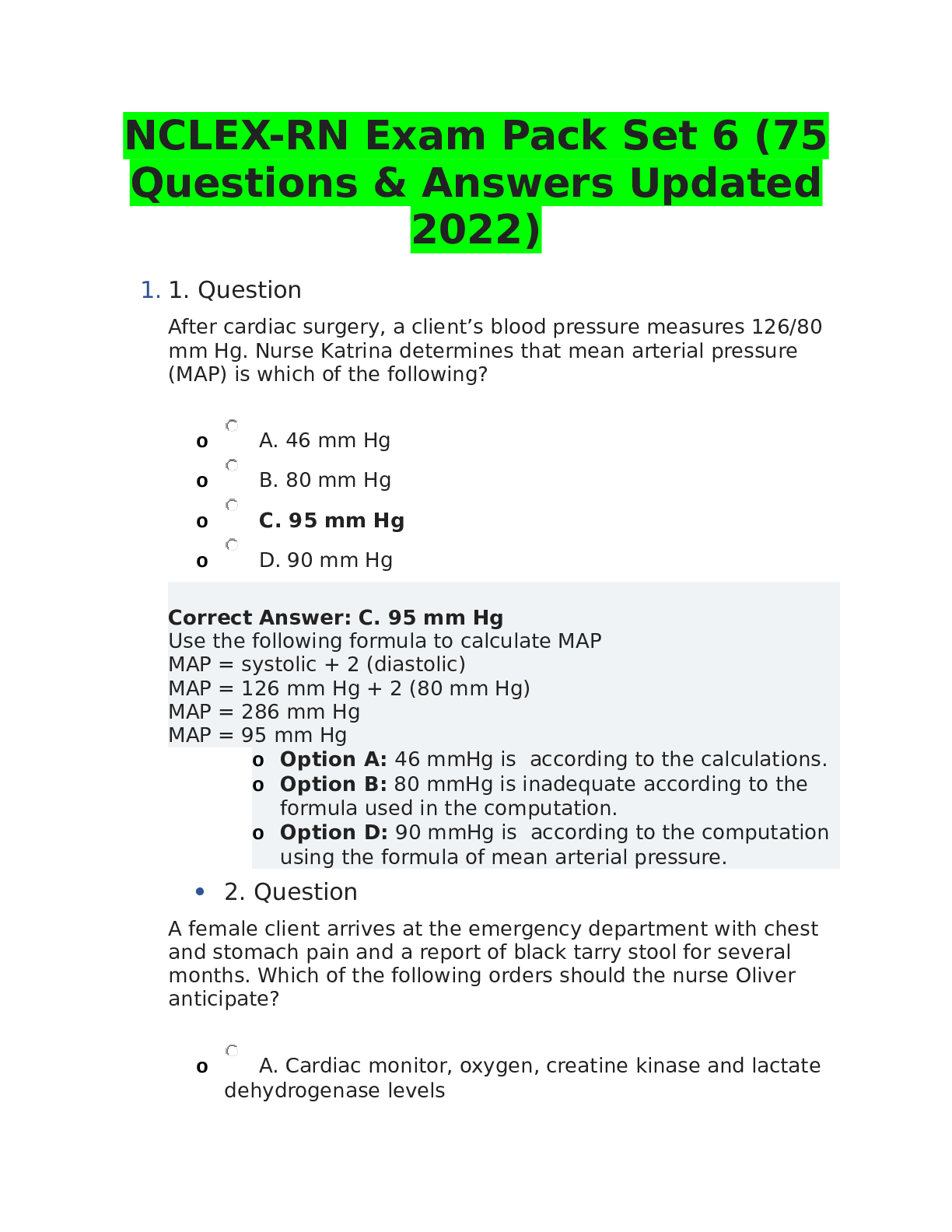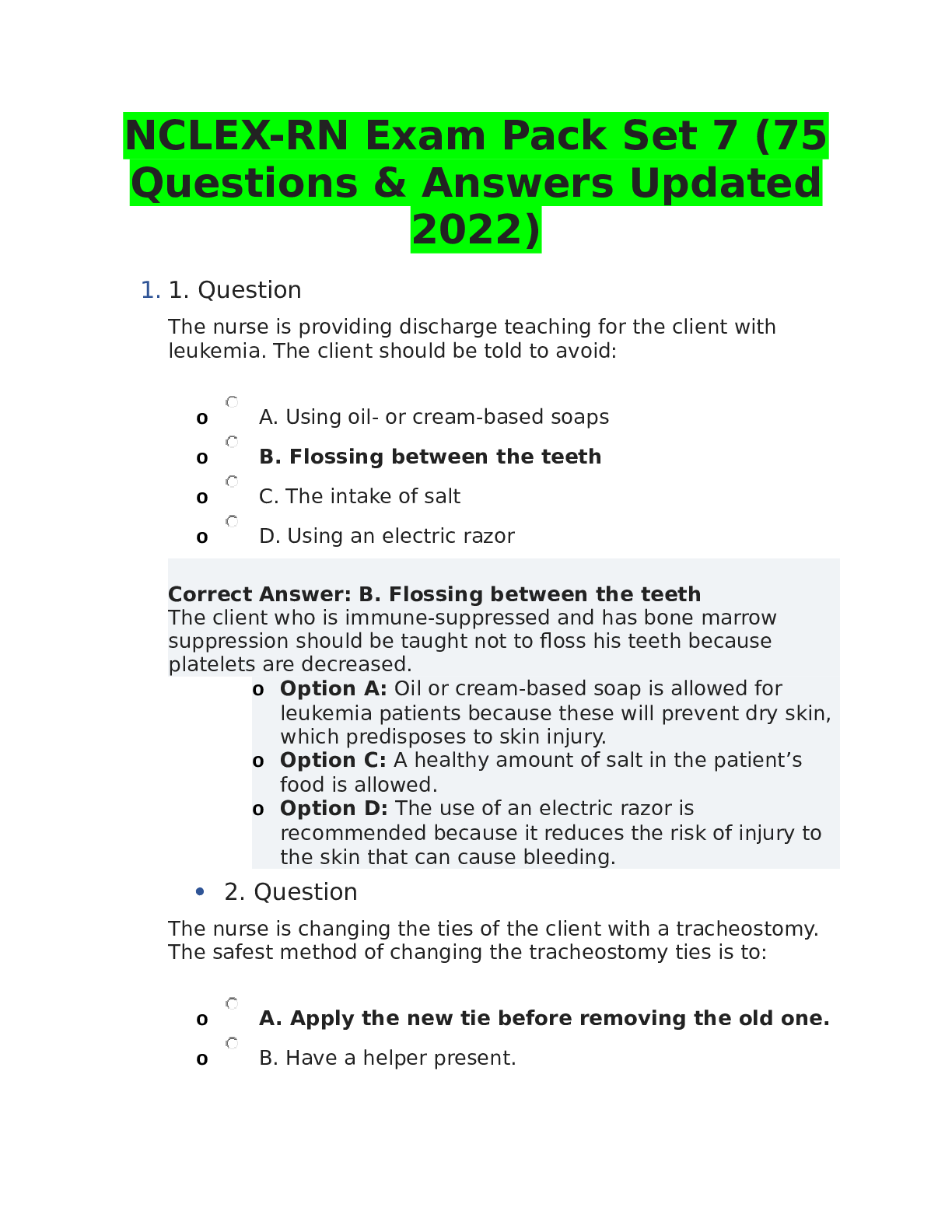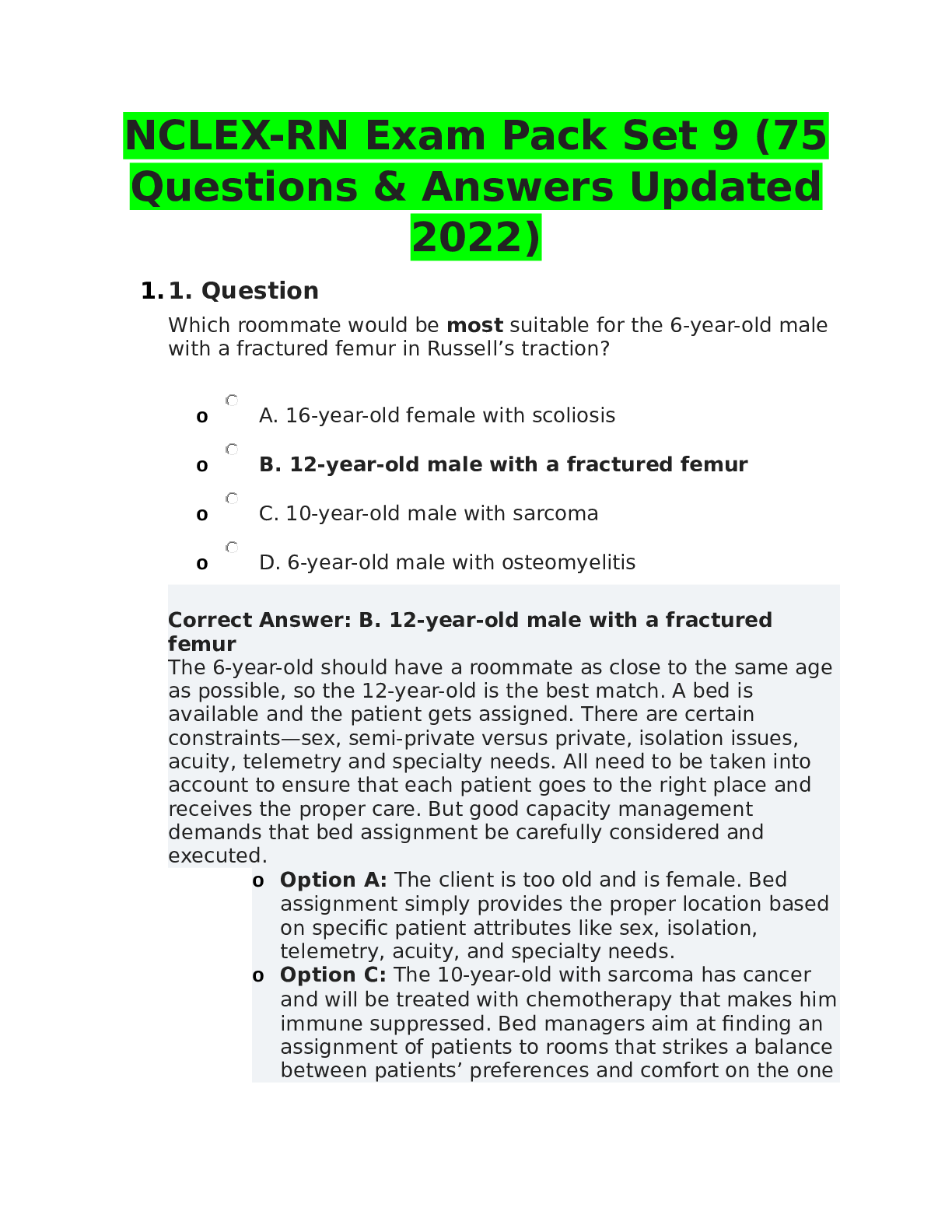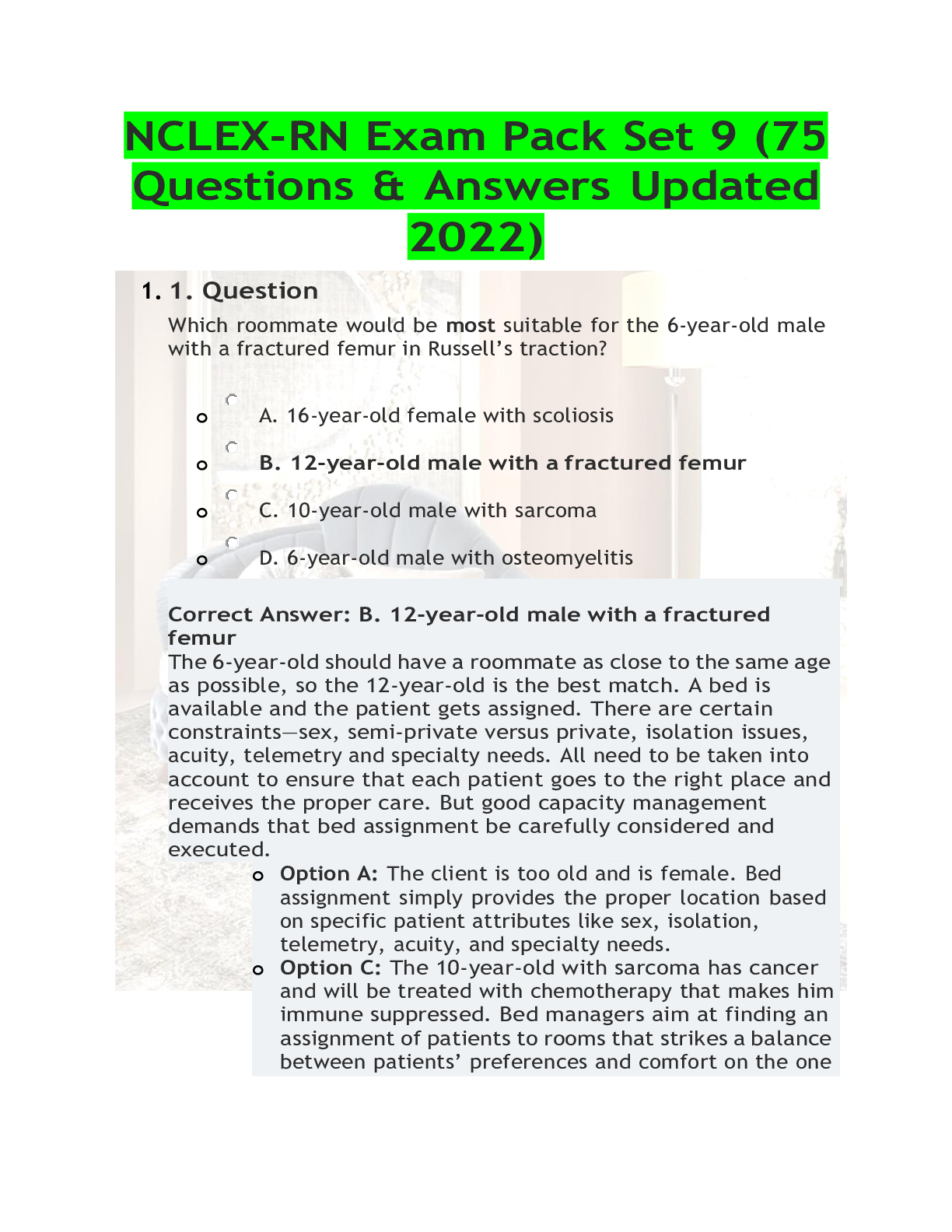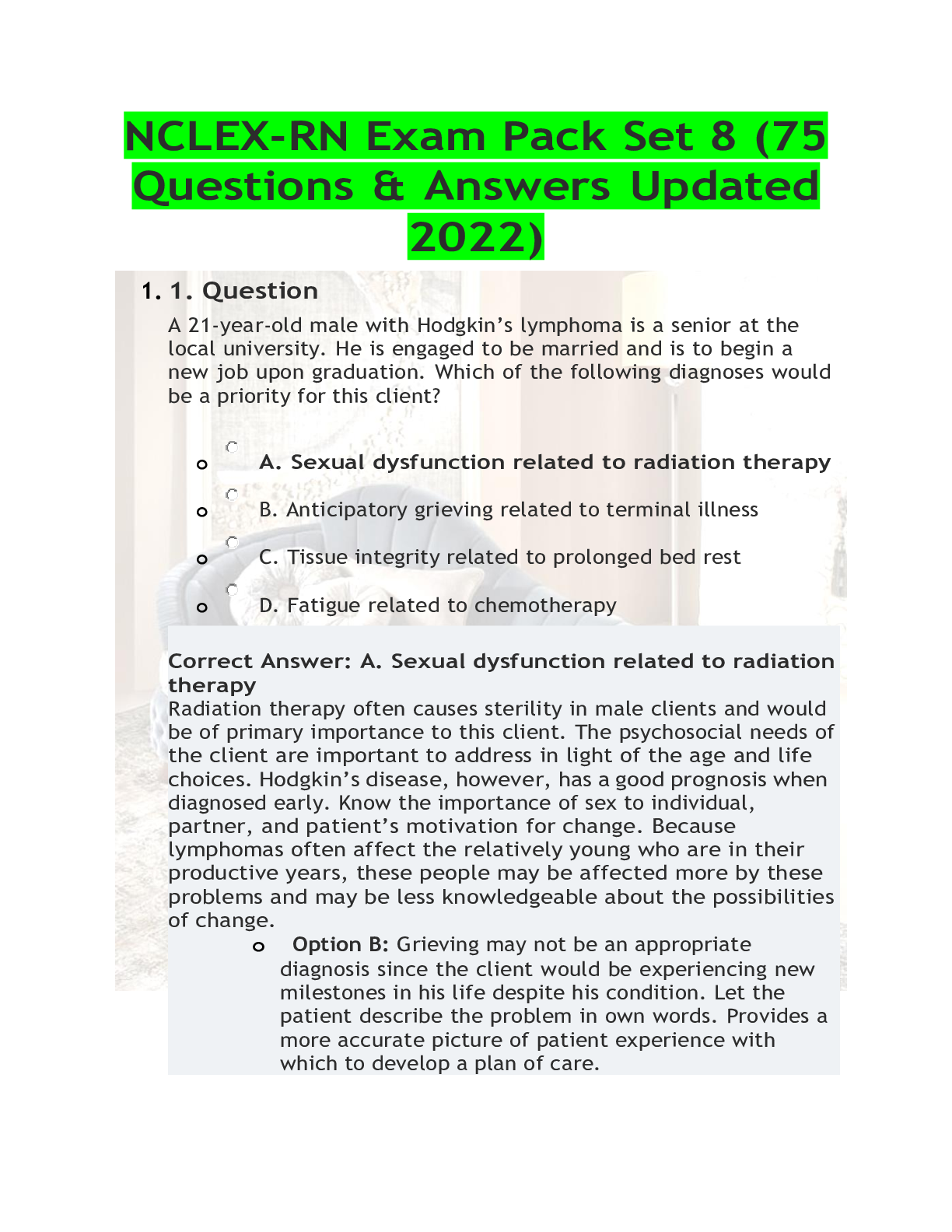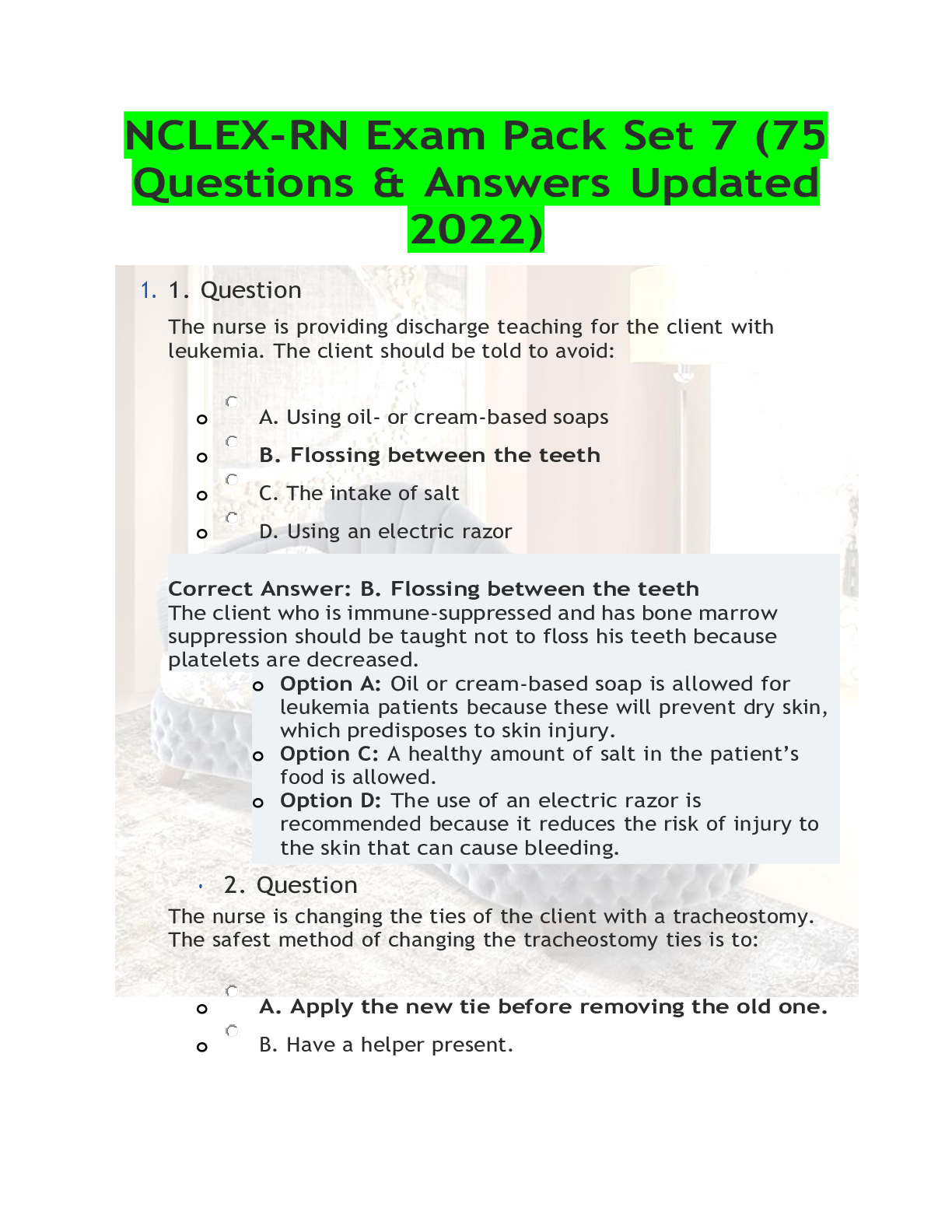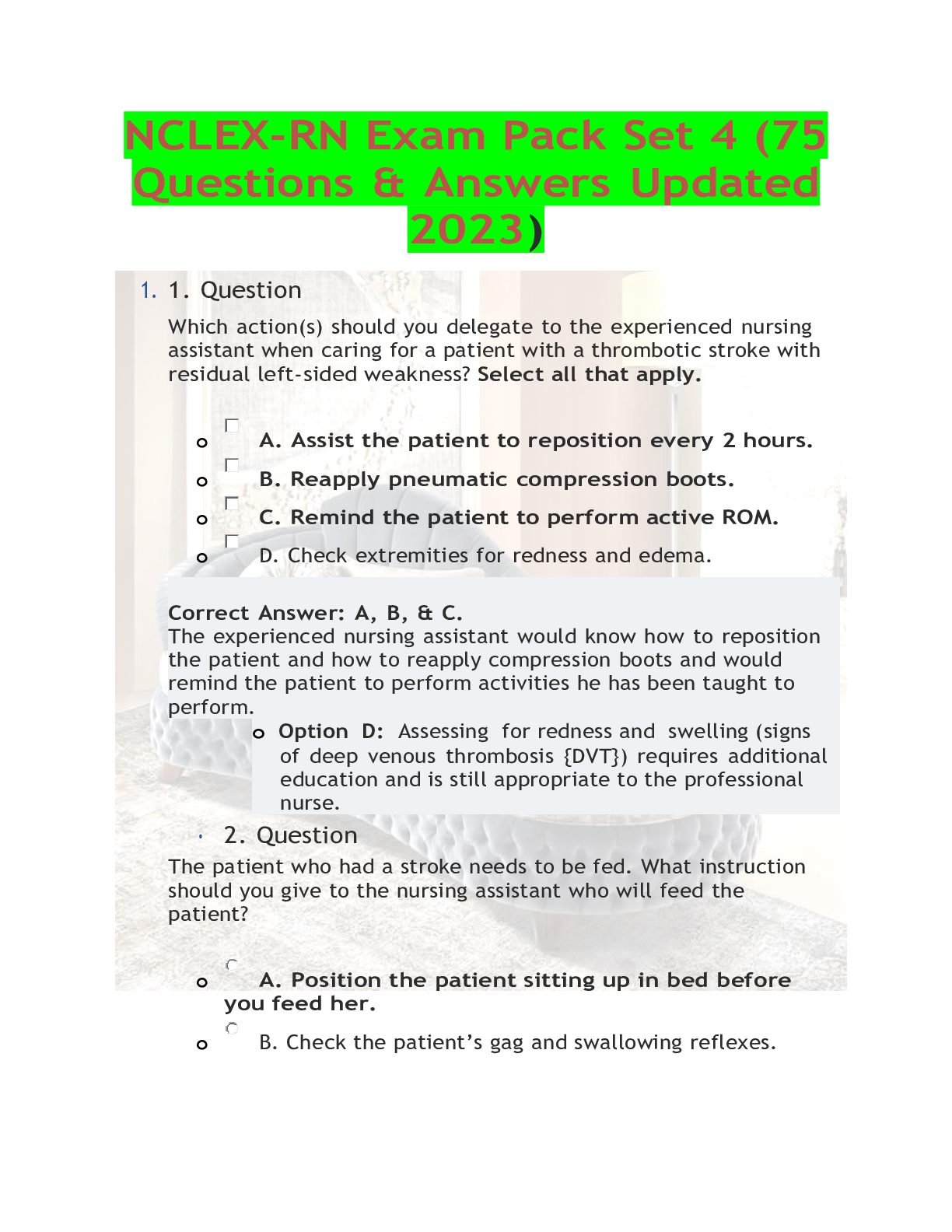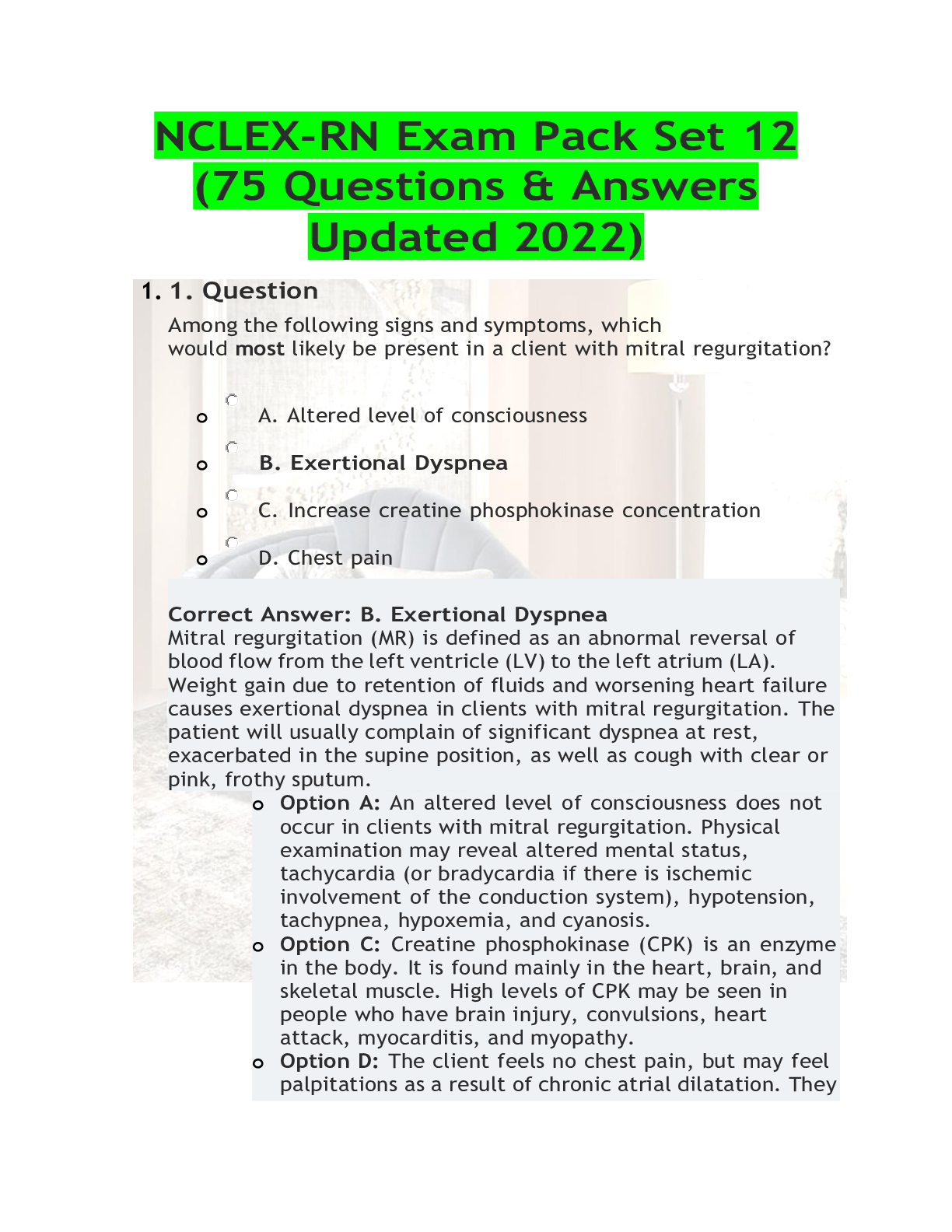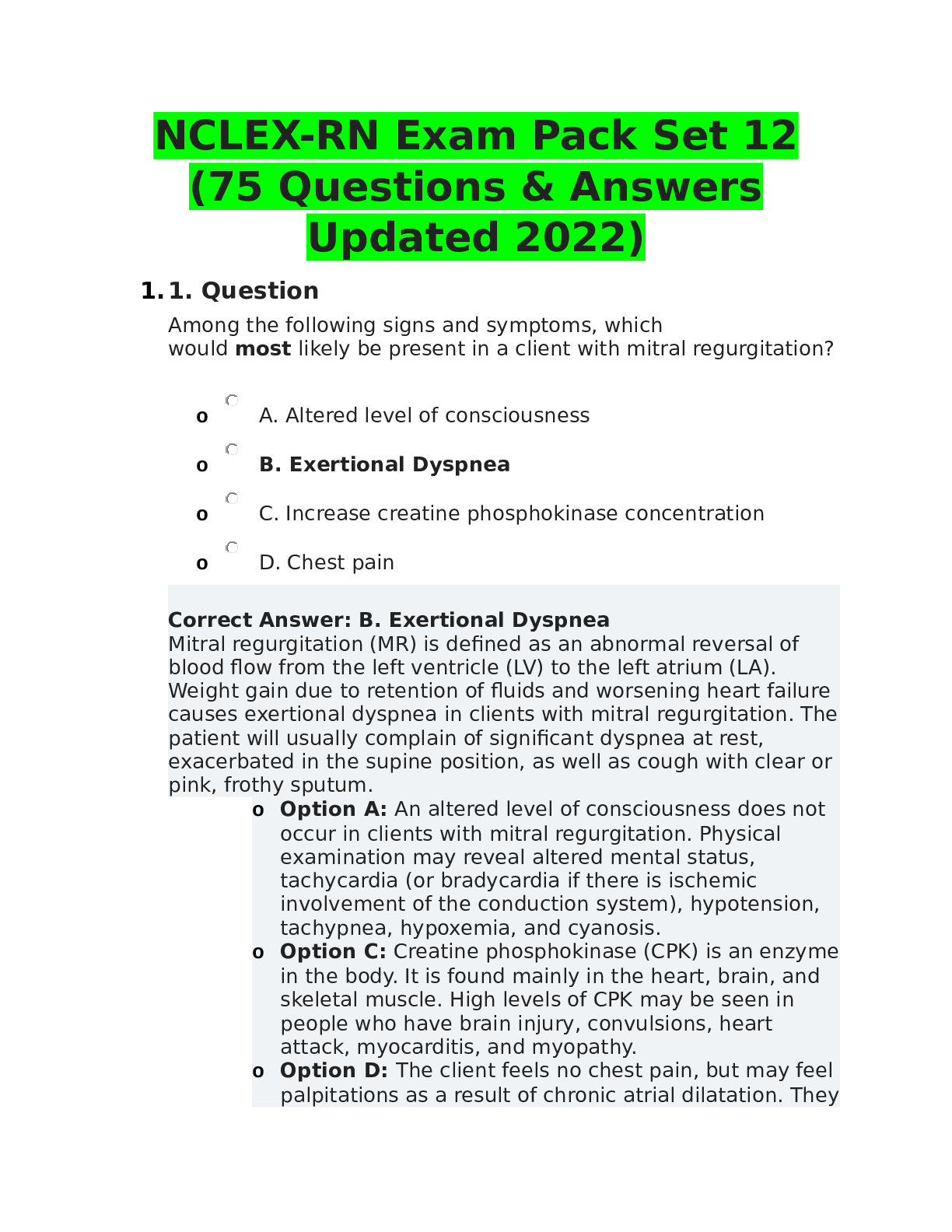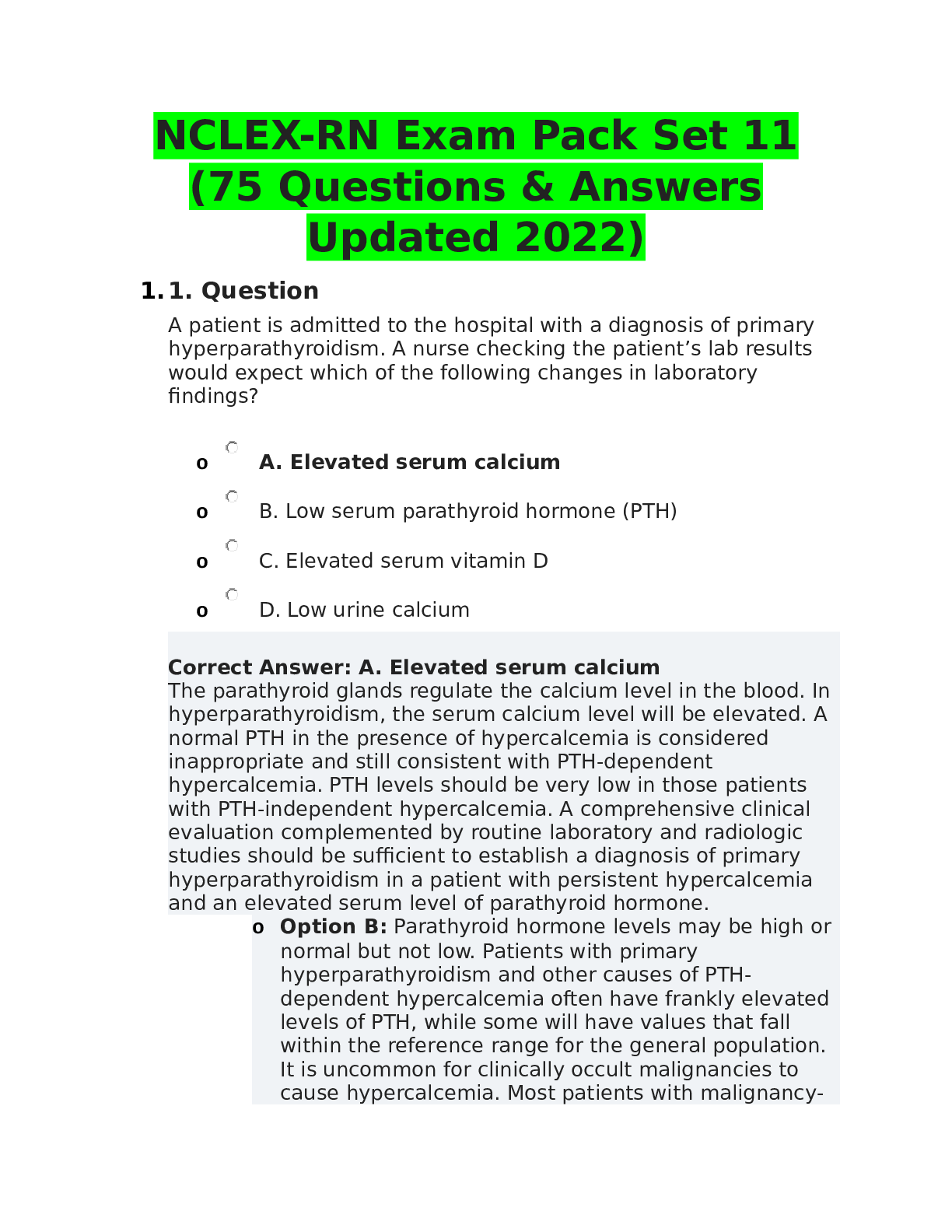NCLEX-RN Exam Pack Set 10 (75 Questions & Answers Updated 2022)
Document Content and Description Below
1. Question The nurse should visit which of the following clients first? o A. The client with diabetes with a blood glucose of 95mg/dL o B. The client with hypertension being maintained on Lisino... pril o C. The client with chest pain and a history of angina o D. The client with Raynaud’s disease Correct Answer: C. The client with chest pain and a history of angina The client with chest pain should be seen first because this could indicate a myocardial infarction. Despite many advances in treatment, acute MI still carries a mortality rate of 5-30%; the majority of deaths occur prior to arrival to the hospital. In addition, within the first year after an MI, there is an additional mortality rate of 5% to 12%. The overall prognosis depends on the extent of heart muscle damage and ejection fraction. o Option A: The client in answer A has blood glucose within normal limits. The diagnosis of T1DM is usually through a characteristic history supported by elevated serum glucose levels (fasting glucose greater than 126 mg/dL, random glucose over 200 mg/dL, or hemoglobin A1C (HbA1c exceeding 6.5%) with or without antibodies to glutamic acid decarboxylase (GAD) and insulin. o Option B: The client in this option is maintained on blood pressure medication. Pharmacological therapy consists of angiotensin-converting enzyme inhibitors (ACEi), angiotensin receptor blockers (ARBs), diuretics (usually thiazides), calcium channel blockers (CCBs), and beta-blockers (BBs), which are instituted taking into account age, race, and comorbidities such as presence of renal dysfunction, LV dysfunction, heart failure, and cerebrovascular disease. JNC-8, ACC, and ESC/ ESH have their separate recommendations for pharmacological management. o Option D: The client in answer D is in no distress. In Raynaud phenomenon, blood-flow restriction occurs during cold temperatures and emotional stress. Specifically, in Raynaud phenomenon, there is vasoconstriction of the digital arteries and cutaneous arterioles. 2. Question A client with cystic fibrosis is taking pancreatic enzymes. The nurse should administer this medication: o A. Once per day in the morning o B. Three times per day with meals o C. Once per day at bedtime o D. Four times per day Correct Answer: B. Three times per day with meals Pancreatic enzymes should be given with meals for optimal effects. These enzymes assist the body in digesting needed nutrients. Chronic, supportive therapy for patients with CF includes regular pancreatic enzymes, fat-soluble vitamins (A, D, E, K), mucolytics, bronchodilators, antibiotics, and antiinflammatory agents. o Option A: A new class of medications known as CFTR modulator therapies is designed to correct the dysfunction by improving production, intracellular processing, or function of the CFTR protein caused by the mutated gene. Each medication is targeted at a specific dysfunction caused by a specific gene mutation. o Option C: Individuals with CF are encouraged to consume a high-fat diet with supplemental fat-soluble vitamins to compensate for malabsorption. Additionally, patients living with CF are encouraged to consume a high-calorie diet to maintain a healthy weight and combat chronic inflammation and frequent infections that are commonly encountered. o Option D: According to the Cystic Fibrosis Foundation, women should consume 2500 to 3000 calories a day, while men should consume 3000 to 3700 calories a day. Those living in hot climates or who participate in activities that cause sweating are encouraged to consume additional sodium in their diet. [Show More]
Last updated: 1 year ago
Preview 1 out of 89 pages

Reviews( 0 )
Document information
Connected school, study & course
About the document
Uploaded On
Mar 05, 2023
Number of pages
89
Written in
Additional information
This document has been written for:
Uploaded
Mar 05, 2023
Downloads
0
Views
83



